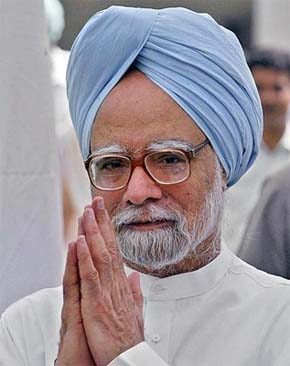
Indian Prime Minister Manmohan Singh Source: myindia.in
As noted in an earlier post, inflation is a sensitive issue in India. In addition to worrying about over-heating, today a preoccupation in many Emerging Market Economies (e.g. China and Brazil), Indian politicians are concerned that when food prices rise, millions may starve. JPMorgan below analyzes the latest inflation report, including double-digit price hikes in the food category. Moreover, with only modest capital expansion going on in India (outside of infrastructure), the industrial sector is bumping up against supply constraints, which can be inflationary. Hence, JPM’s conclusion that the Reserve Bank of India will tighten monetary policy sooner rather than later…
From JPMorgan’s Emerging Markets Today, June 15, 2010:
WPI headline inflation came in at 10.16%oya (J.P. Morgan:
10.2%; consensus: 9.6%) in May. In line with the trend
over the last few months, food inflation subsided slightly
(12.1%oya; -0.3%m/m, sa), which was more than offset by
rising non-food inflation (9.4%oya; 1.8%m/m, sa). Core
inflation (non-food manufacturing + non-food primary) rose
8%oya (2.3%m/m, sa). Importantly, the February and March
inflation numbers were revised up. With these revisions,
headline WPI entered double digits in February (10.05%oya).
The RBI in its April policy review projected inflation to
stabilize just below 10% by June/July before declining on
base effects. The economy has seen little in the way of
significant capital expansion outside of infrastructure,
whereas IP has sizzled for the last six months, including as
late as April when it reached 17.6%oya, close to its highest
in 20 years. Indeed, May PMI, which strongly leads the IP
cycle, rose to its highest since June 2008 as did the ordersto-
inventory ratio suggesting that capacity constraints are
increasingly binding. On balance, we believe that the RBI
could raise rates by 25bp before the July policy review,
followed by another 25bp rate hike at the review. To
alleviate the liquidity squeeze, the RBI will likely look at
other options, such as reducing SLR further or opening
special discount windows.